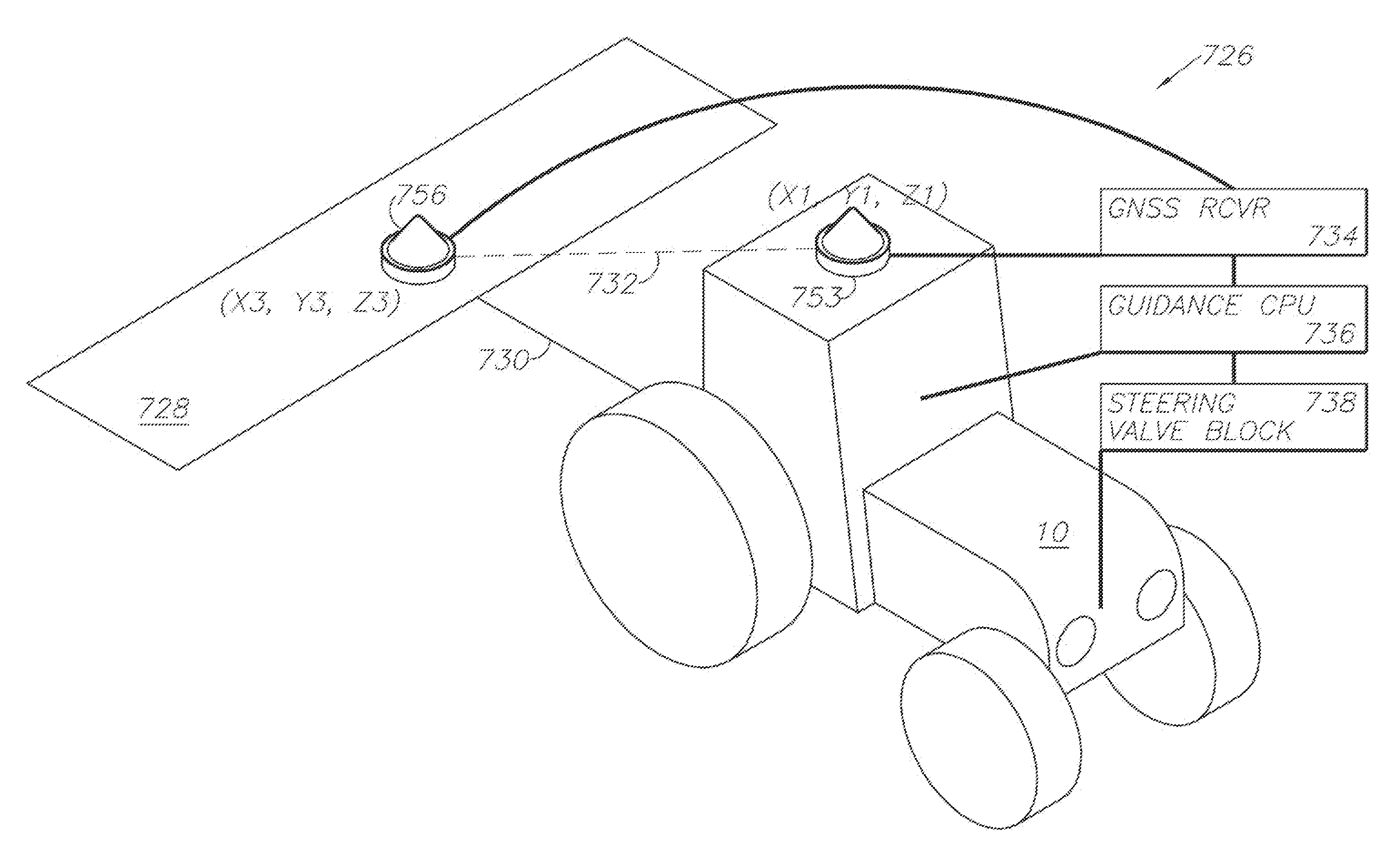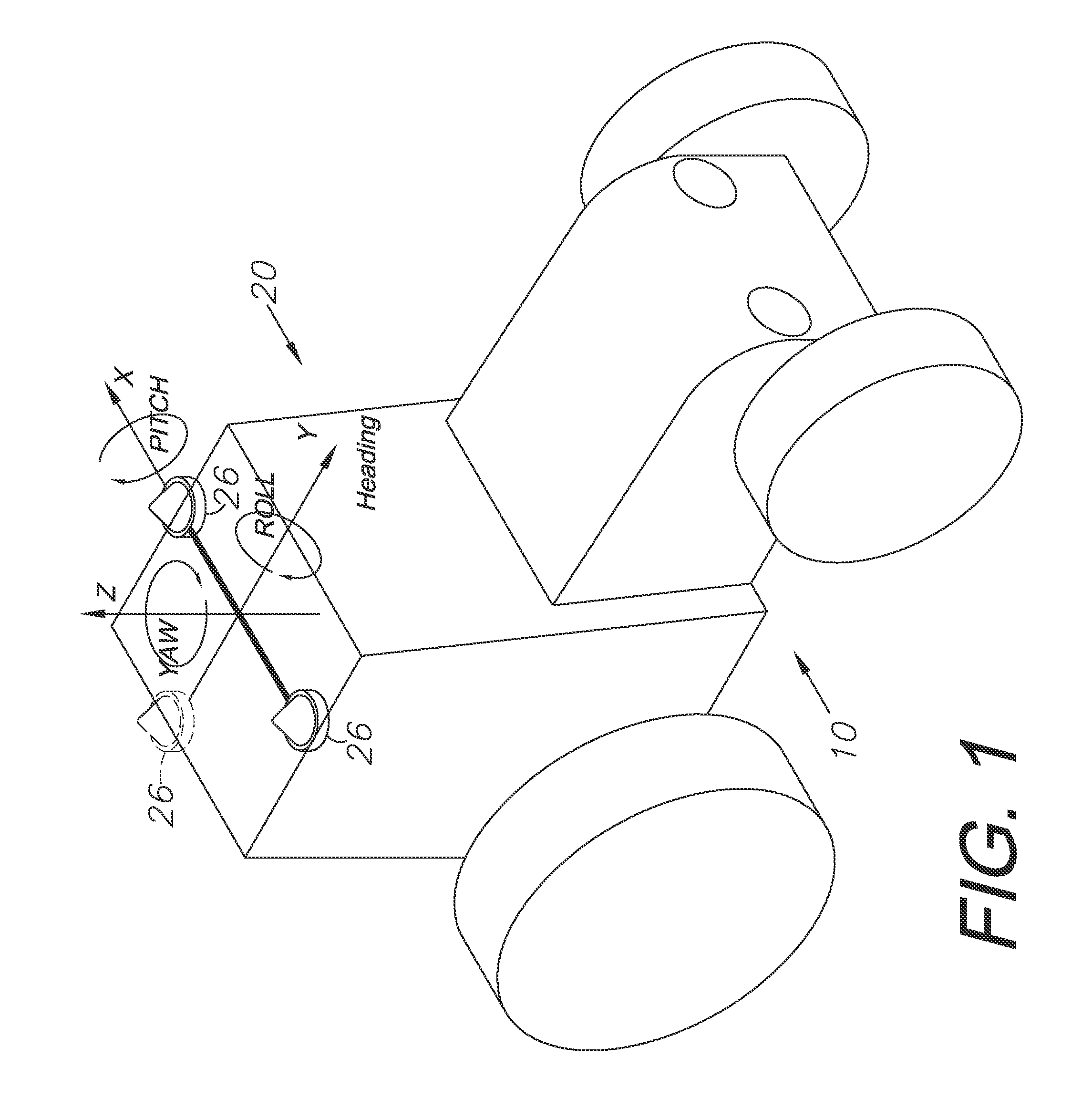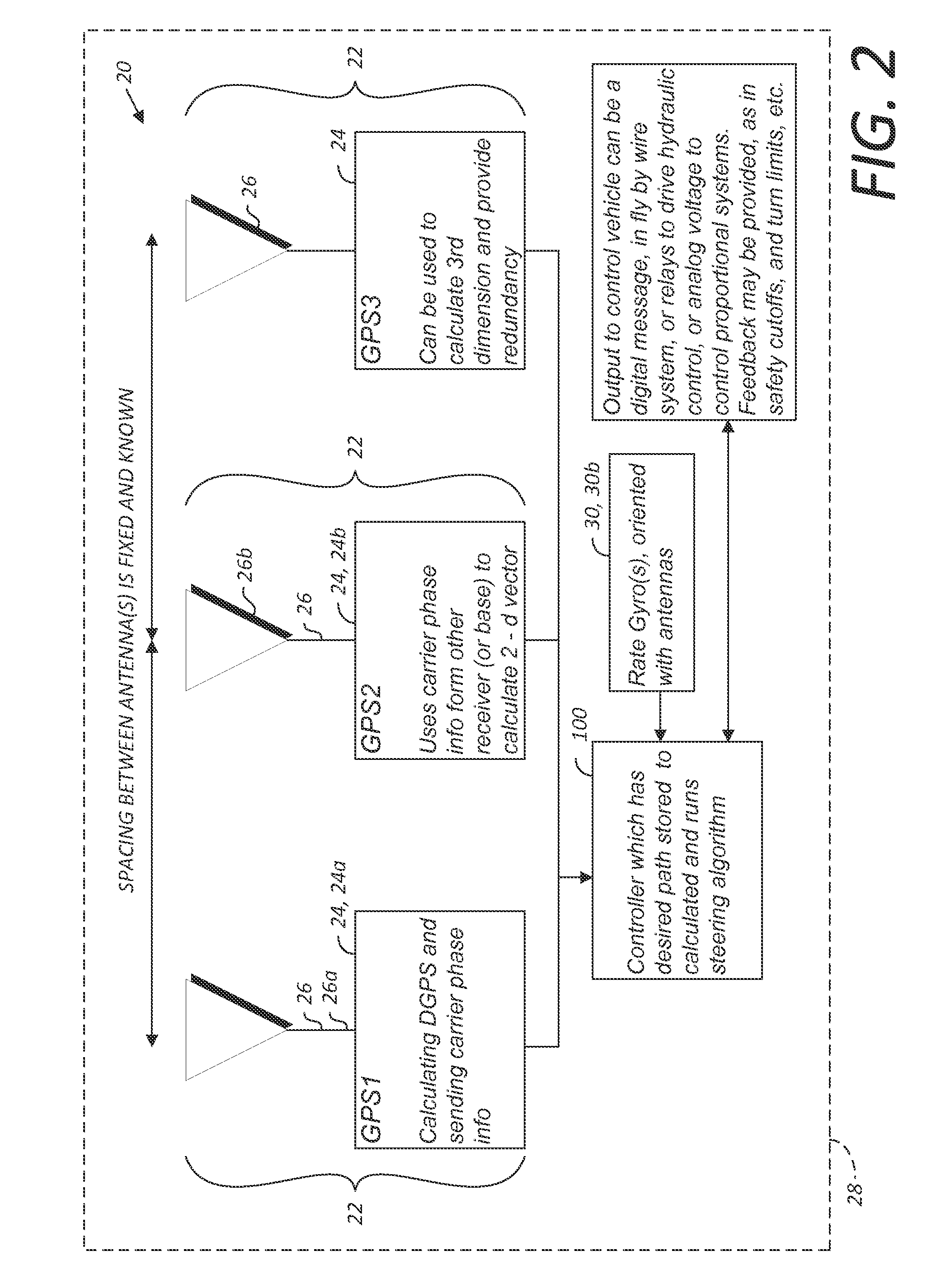GNSS guidance and machine control
a technology of global navigation satellite and guidance, applied in the direction of machine control, process control, distance measurement, etc., can solve the problems of gyroscopes with good short-term characteristics but undesirable long-term drift characteristics
- Summary
- Abstract
- Description
- Claims
- Application Information
AI Technical Summary
Benefits of technology
Problems solved by technology
Method used
Image
Examples
Embodiment Construction
I. GNSS Introduction
[0047]Global navigation satellite systems (GNSSs) are broadly defined to include GPS (U.S.), Galileo (proposed), GLONASS (Russia), Beidou / Compass (China, proposed), IRNSS (India, proposed), QZSS (Japan, proposed) and other current and future positioning technology using signals from satellites, with or without augmentation from terrestrial sources. Inertial navigation systems (INS) include gyroscopic (gyro) sensors, accelerometers and similar technologies for providing output corresponding to the inertia of moving components in all axes, i.e. through six degrees of freedom (positive and negative directions along X, Y and Z axes). Yaw, pitch and roll refer to moving component rotation about these axes. Said terminology will include the words specifically mentioned, derivatives thereof and words of similar meaning.
[0048]Disclosed herein in an exemplary embodiment is a sensor system for vehicle guidance. The sensor system utilizes a plurality of GNSS carrier phase d...
PUM
 Login to View More
Login to View More Abstract
Description
Claims
Application Information
 Login to View More
Login to View More - R&D
- Intellectual Property
- Life Sciences
- Materials
- Tech Scout
- Unparalleled Data Quality
- Higher Quality Content
- 60% Fewer Hallucinations
Browse by: Latest US Patents, China's latest patents, Technical Efficacy Thesaurus, Application Domain, Technology Topic, Popular Technical Reports.
© 2025 PatSnap. All rights reserved.Legal|Privacy policy|Modern Slavery Act Transparency Statement|Sitemap|About US| Contact US: help@patsnap.com



